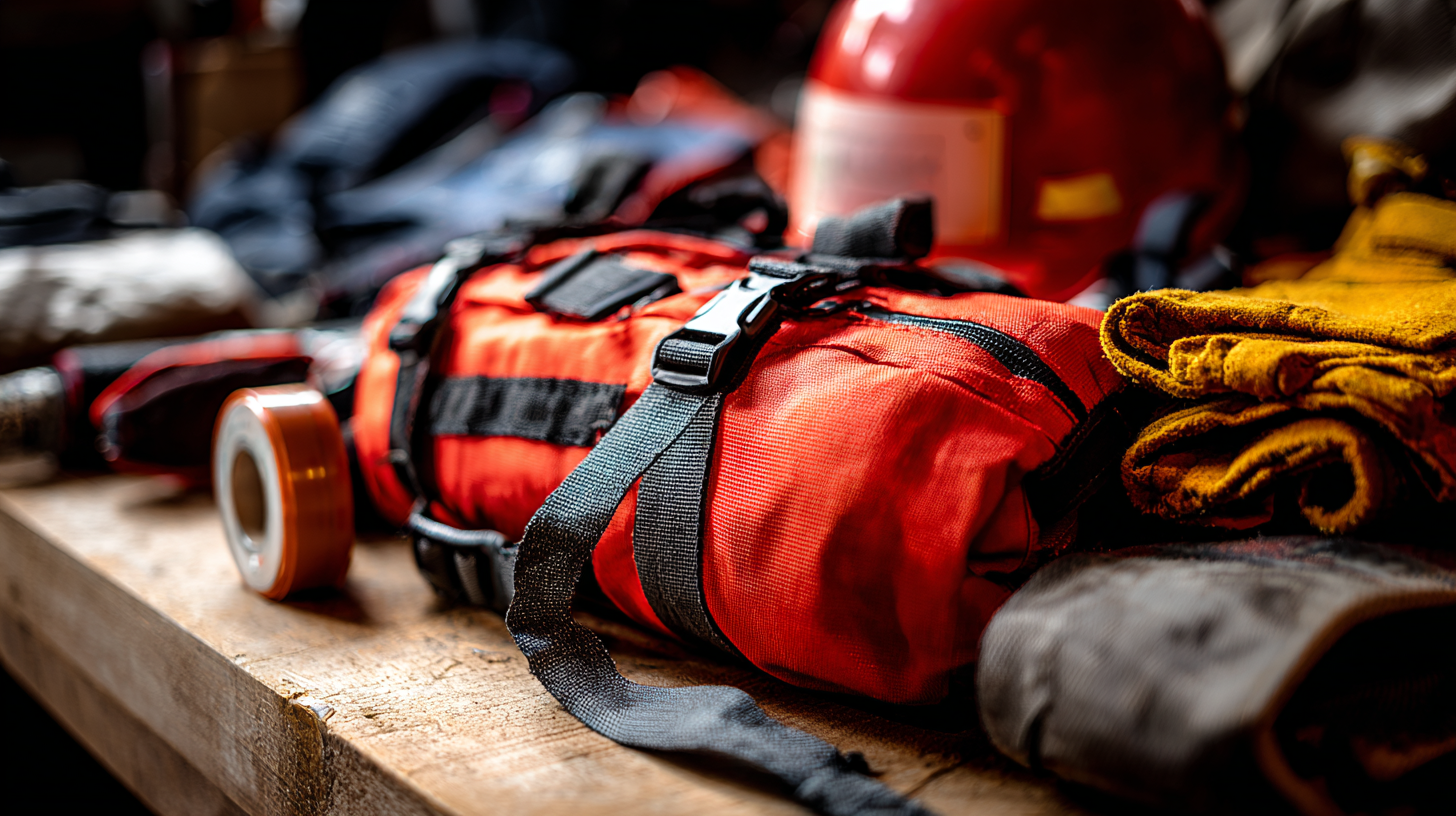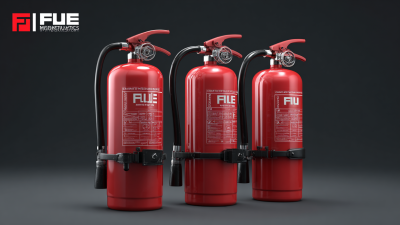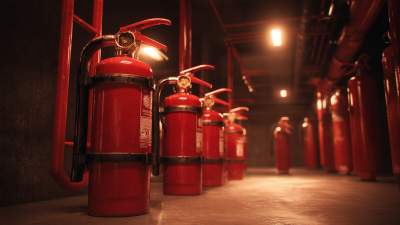The Essential Guide to Choosing the Right Life Safety Equipment for Every Situation
In today's world, ensuring safety in various environments is of paramount importance, making the selection of the right life safety equipment a critical decision for individuals, businesses, and organizations alike. From industrial settings to residential spaces, the appropriate equipment can mean the difference between life and death in emergency situations.

Understanding the unique requirements and risks associated with each situation is essential in guiding one to choose the life safety equipment that not only meets regulatory standards but also provides effective protection and peace of mind. This comprehensive guide aims to simplify the selection process, exploring the diverse types of life safety equipment available on the market, their specific applications, and the key factors to consider when making a choice.
As we delve into the various categories of safety equipment, we will highlight the significance of being well-prepared, ensuring that you have the right tools at your disposal to safeguard lives when it matters most.
Understanding the Importance of Life Safety Equipment in Various Environments
Life safety equipment plays a critical role in safeguarding individuals across various environments, from residential spaces to commercial buildings and outdoor settings. Understanding the unique risks associated with each environment allows for the selection of appropriate equipment tailored to specific needs. For instance, in a home setting, smoke detectors and fire extinguishers are essential for early fire detection, whereas commercial establishments may require more extensive systems, such as sprinkler systems and emergency exits, to ensure the safety of larger groups of people.
Furthermore, outdoor environments present unique challenges that necessitate specialized safety equipment. This includes life jackets for water activities, helmets for construction sites, and first aid kits readily available for emergencies. The importance of having the right life safety equipment cannot be overstated, as it not only helps prevent accidents but also prepares individuals to respond effectively when emergencies occur. Investing in the appropriate gear illustrates a commitment to safety and enhances one’s ability to manage hazardous situations effectively.
The Essential Guide to Choosing the Right Life Safety Equipment for Every Situation
Key Factors in Selecting Fire Safety Gear: Industry Insights and Statistics
When selecting fire safety gear, several key factors must be considered to ensure both efficacy and compliance with industry standards. Firstly, understanding the specific risks associated with the environment is crucial. For instance, workplaces in manufacturing or construction may require different types of protective clothing and equipment compared to those in office settings. According to industry insights, approximately 30% of fire-related injuries occur in workplaces lacking essential safety measures. This statistic underscores the importance of a tailored approach to selecting gear that aligns with potential hazards.
Moreover, regulations set by organizations such as the Occupational Safety and Health Administration (OSHA) play a significant role in guiding equipment selection. Compliance with these regulations not only enhances safety but also provides legal protection for businesses. It is essential to choose fire safety equipment certified by recognized authorities, ensuring that it meets necessary performance standards. Recent statistics reveal that companies investing in compliant fire safety gear see a 25% reduction in workplace accidents. This demonstrates the critical importance of making informed decisions based on robust data and expert recommendations in the industry.
Evaluating Emergency Communication Devices: Best Practices and Data Trends
In today's unpredictable environment, evaluating emergency communication devices is critical for ensuring effective response during crises. According to the National Fire Protection Association (NFPA), 70% of businesses that do not have a cohesive emergency communication plan fail within a year of a disaster. This statistic underscores the necessity of selecting reliable devices that can efficiently disseminate information during emergencies. Organizations must consider communication tools that not only provide real-time updates but also integrate seamlessly with existing safety protocols.

Recent data trends indicate a growing reliance on technologies such as mass notification systems and mobile alert platforms. A report by the Emergency Communications Research Council highlights that 85% of organizations are now incorporating mobile solutions into their emergency plans. These systems allow for immediate alerts to be sent to employees’ smartphones or other devices, ensuring that communication reaches individuals quickly and effectively.
Additionally, the adoption of two-way radios remains prevalent, especially in environments like construction sites where immediate verbal communication is vital. By focusing on these best practices and leveraging up-to-date data trends, organizations can significantly bolster their life safety strategies and enhance their capacity to respond to emergencies.
Analyzing the Role of Personal Protective Equipment (PPE) in Workplace Safety
The increasing awareness of workplace hazards has significantly contributed to the growth of the personal protective equipment (PPE) market. As industries like construction, oil, and gas continue to expand, employers are prioritizing safety measures to protect their workforce from potential dangers. This shift in focus has made PPE an essential component in risk management, driving innovation and investment in safety gear designed to mitigate injuries and fatalities.

As regulatory frameworks evolve and more stringent safety guidelines are implemented, organizations are compelled to adopt advanced PPE solutions. The heightened emphasis on workplace safety in North America is evident, with businesses investing in high-quality personal protective gear tailored for high-risk environments. This trend not only enhances worker safety but also fosters a culture of accountability and care within organizations, reinforcing the importance of safeguarding employees against occupational hazards.
Guidelines for Implementing Life Safety Solutions: Case Studies and Expert Recommendations
When selecting life safety equipment, it’s imperative to base your choices on rigorous analysis and real-world data. According to a report by the National Fire Protection Association (NFPA), nearly 80% of fire-related fatalities occur in homes where smoke alarms were either absent or not functioning. Implementing reliable life safety solutions can significantly reduce these risks. Case studies from various municipalities have shown that annual testing and maintenance of alarm systems can improve detection rates by up to 50%, underscoring the importance of proactive measures in fire safety.
**Tips:** Always ensure that your smoke alarms are interconnected. This feature allows all alarms in the unit to sound simultaneously, providing a more comprehensive warning system.
In addition to smoke alarms, understanding the specific needs of your environment plays a critical role in choosing the right safety equipment. For example, establishments with high foot traffic, such as malls, should consider integrating advanced evacuation systems as highlighted by the Occupational Safety and Health Administration (OSHA). Implementing these systems not only enhances safety but also aids in efficient crowd control during emergencies.
**Tips:** Regularly train staff on emergency procedures to ensure that everyone knows how to respond swiftly and accurately in a crisis.
The Essential Guide to Choosing the Right Life Safety Equipment for Every Situation
| Equipment Type | Recommended Use | Key Features | Case Study | Expert Recommendation |
|---|---|---|---|---|
| Fire Extinguisher | Office Buildings | Class A, B, C fires; portable; easy to use | Successful in office evacuation drills | Regular maintenance and training recommended |
| Smoke Alarm | Residential Homes | Battery-operated; loud alarm; photoelectric | Prevented multiple fire disasters in households | Install in every sleeping area |
| Emergency Exit Sign | Public Buildings | Illuminated; directional; compliant with codes | Improved evacuation efficiency | Conduct regular drills to familiarize occupants |
| First Aid Kit | Workplaces | Includes bandages, antiseptic, emergency contacts | Used effectively in workplace injury response | Ensure staff knows kit location and usage |
| Automated External Defibrillator (AED) | Gymnasiums | Portable; voice instructions; easy to use | Saved lives during cardiac events | Train staff annually on AED use |
Related Posts
-

Future Market Insights for Best Fire Extinguisher Equipment with 2025 Trends and Expert Tips
-

Embracing the Future: How Best Life Safety Equipment Will Transform Workplace Safety by 2025
-

Top 10 Fire Extinguishers from Chinese Manufacturers at the 137th Canton Fair
-

Challenges in Fire Extinguisher Technologies: Unveiling Industry Trends and Solutions
-

How to Implement Effective Fire Protection Systems in Your Business Environment
-

How to Enhance Your Home’s Fire and Safety Measures Effectively
